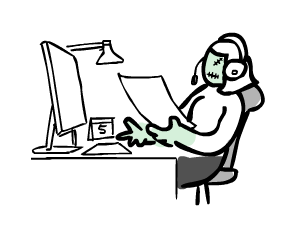I recently gave a talk in Michigan on the topic of servant-leadership. Unfortunately, servant-leadership is something that is painfully absent in so many organizations. Just a few years ago, it (servant-leadership) was not something I had even heard of. Going back and reviewing the PMBOK made me realize two glaring omissions. There is a lack of content on stakeholder or team engagement and there is a lack of content on leadership. Fortunately, in the last few years, I have enjoyed books by authors like Clay Shirky, Seth Godin, Dan Pink, and Dan Ariely. I've also met and interacted with some amazing people in the Agile community. I now interact differently with my peers, as a result of these experiences. I now apply my social norms at work. What are social norms? They are patterns of behavior in a particular group, community, or culture, accepted as normal and to which an individual is accepted to conform. We all go to work and we all get paid to do it. Too many times, we take things for granted. We don't question the things we do or the things that happen to us. I'm pretty sure this is based on conditioning over a long period of time. Perhaps we need to start treating those we work with more like those we socialize with. Next time you interact with a fellow employee, ask yourself if your behavior is socially acceptable.
Social Norms
Within an organization, where we are working with other people, things can get twisted. Some exhibit bad behavior and believe it's somehow forgivable because we're all getting paid. Well, I don't think that's acceptable. It's very interesting to see the same people behave differently, when not in the office environment. Why is it some people forget basic manners or common courtesy, when in an office environment?
Case in point, I hold the door open for people, regardless if I know them or not. I see this as socially expected behavior. Socially, I expect a thank you. To say I expect it is a slight embellishment. Outside of the office, I still expect a thank you. Unfortunately, at the office, I've started to accept not getting any reciprocation. There are a few people in my building that I don't personally know but I still hold the door for them. They won't make eye contact with me and they won't say thank you. When the situation is reversed, these same people do not hold the door for anyone. But, I refuse to accept their behavior.
We all need to strive to understand and empathize with others. People need to be accepted and recognized for their special and unique qualities. Assume the good intentions of your coworkers and don't reject them as people, even while refusing to accept their behavior or performance.
Drawing: Pictofigo








